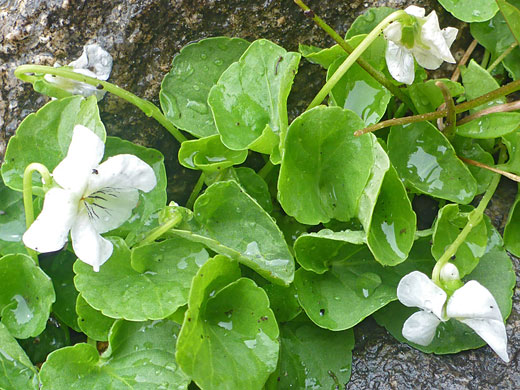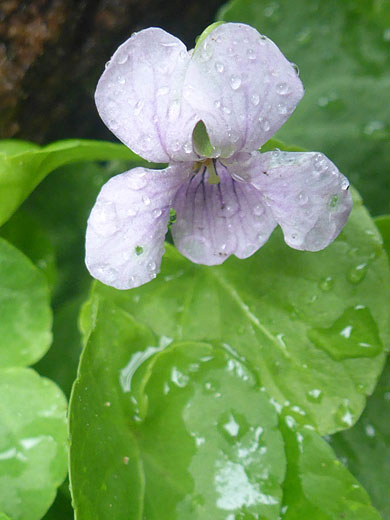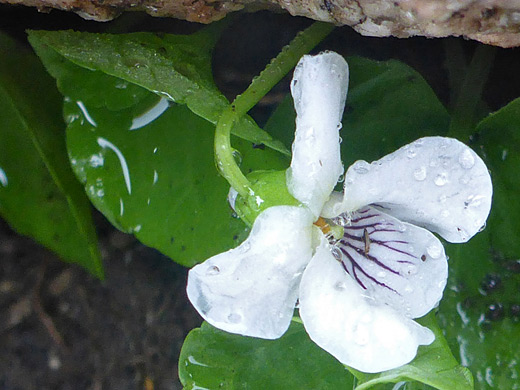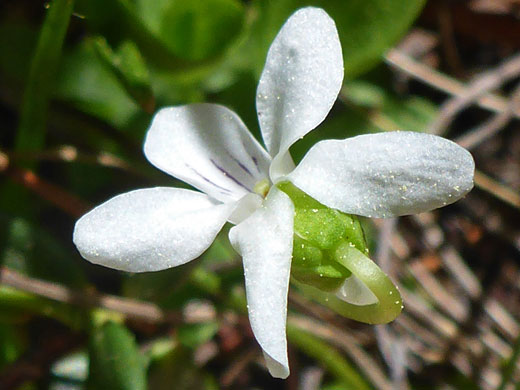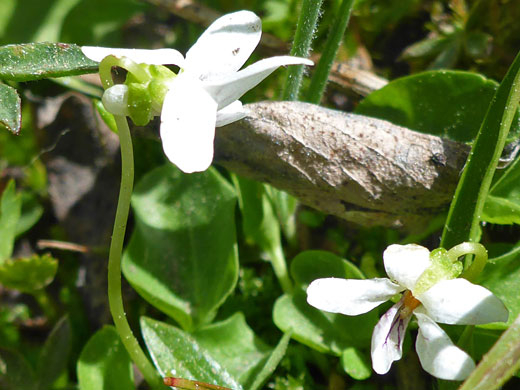Common names:
Small white violet, northern white violet
Family:
Scientific name:
Viola macloskeyi
Main flower color:
Range:
The Rocky Mountain states and all states to the west; mostly in the Pacific states, and the Rocky Mountains
Height:
Up to 4 inches (the flower stalks)
Habitat:
Lakeshores, streambanks, wet meadows, boggy areas, from sea level to 11,500 feet
Leaves:
Basal, stalked, ovate to reniform, up to 2.5 inches long and 2 inches wide
Season:
April to September
Viola macloskeyi has a long blooming period, reflecting the wide range of locations and elevations it inhabits. Flowers are produced singly, attached by a slender, hairless, green or reddish stalk that rises slightly above the leaves. The flowers are about half an inch in diameter, formed of five white petals; the uppermost two are angled outwards, while the lowest projects forwards, and forms a short spur at the rear. The two side petals usually have a few white hairs near the base, and the lower three petals are crossed by dark purple lines at the base.
The (usually) hairless leaves grow at the base - plants are essentially stemless - and number between two and six. Leaves are ovate in shape, or cordate; projecting downwards either side of the attachment point. Leaf margins may be shallowly toothed, or entire. Leaves are held on stalks up to 4 inches long. The fruit is a short, green capsule containing many spherical brown seeds.
The (usually) hairless leaves grow at the base - plants are essentially stemless - and number between two and six. Leaves are ovate in shape, or cordate; projecting downwards either side of the attachment point. Leaf margins may be shallowly toothed, or entire. Leaves are held on stalks up to 4 inches long. The fruit is a short, green capsule containing many spherical brown seeds.
All Contents © Copyright The American Southwest | Comments and Questions | Contribute | Site Map



